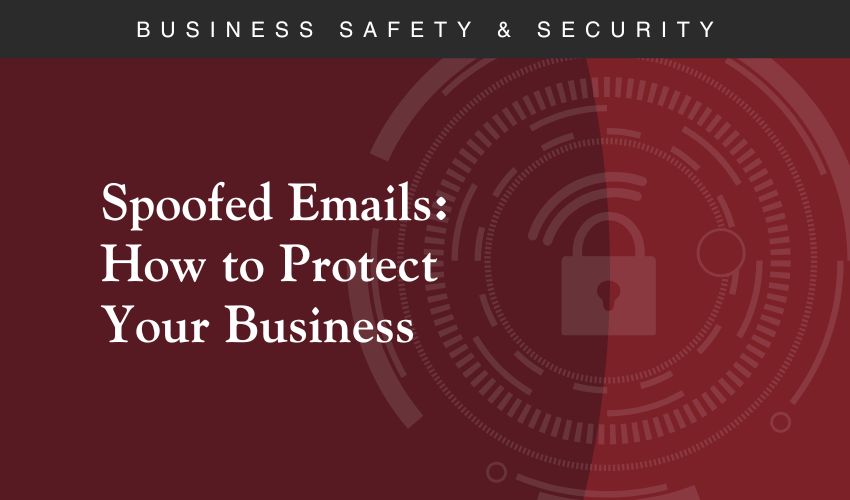
Spoofed Emails: How to Protect Your Business
In today’s digital world, email remains one of the most common tools for communication—and one of the most exploited by cybercriminals. One of the most deceptive tactics used is email spoofing. For businesses, falling victim to a spoofed email can lead to financial loss, data breaches, and damaged trust.
At Monson Savings Bank, we’re committed to helping businesses stay informed and protected. Here’s what you need to know about spoofed emails and how to defend against them.
What Is a Spoofed Email?
A spoofed email is a message that appears to come from a trusted source—like a colleague, vendor, or even your own company—but is actually sent by a cybercriminal. The goal is to trick the recipient into taking harmful actions, such as:
- Clicking a malicious link
- Downloading malware
- Sharing sensitive information
- Authorizing fraudulent payments
Spoofing is often used in phishing and business email compromise (BEC) scams, where attackers impersonate executives or vendors to manipulate employees.
How to Spot a Spoofed Email
Spoofed emails can be convincing, but there are some crucial red flags to watch for:
- Slight variations in email addresses (e.g., @yourbusiness.co instead of @yourbusiness.com)
- Urgent or unusual requests, especially involving money or sensitive data
- Poor grammar or formatting
- Unexpected attachments or links
- Generic greetings like “Dear Customer” instead of your name
Always verify suspicious emails through a separate communication channel—such as a phone call to the known contact.
How to Protect Your Business
Here are key steps to reduce your risk:
- Implement Email Authentication Protocols: Use SPF, DKIM, and DMARC to help prevent spoofed emails from reaching your inbox.
- Train Your Team: Educate employees on how to recognize and report suspicious emails. Regular phishing simulations can help reinforce awareness.
- Use Multi-Factor Authentication (MFA): Even if credentials are compromised, MFA adds an extra layer of protection.
- Establish Clear Payment Protocols: Require dual approval for financial transactions and verify any changes to vendor payment details.
- Monitor and Respond Quickly: Set up alerts for unusual account activity and have a response plan in place in case of a breach. Learn about Check Positive Pay and ACH Positive Pay and how it can help you detect fraud.
Monson Savings Bank Is Here to Help
At Monson Savings Bank, we’re here to help you stay one step ahead. We offer secure digital banking tools, fraud detection services, and personalized support to help protect your business. If you ever suspect fraud or need guidance, reach out to your business banking team.
Visit our Business Security Center for more information on how to protect your business.
This blog post is for informational purposes only and does not constitute legal, financial, or cybersecurity advice. Businesses should consult with qualified professionals for guidance specific to their operations and risk profile. Monson Savings Bank is not responsible for any losses resulting from the use of this information.


